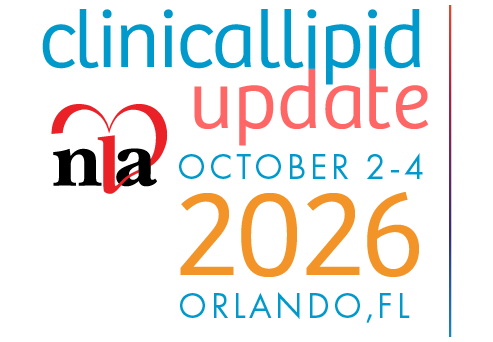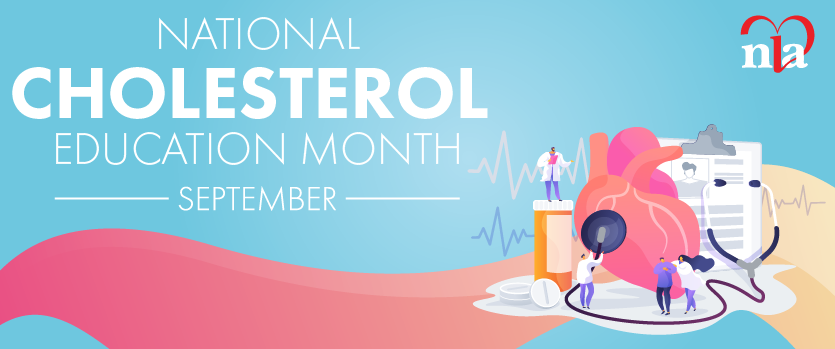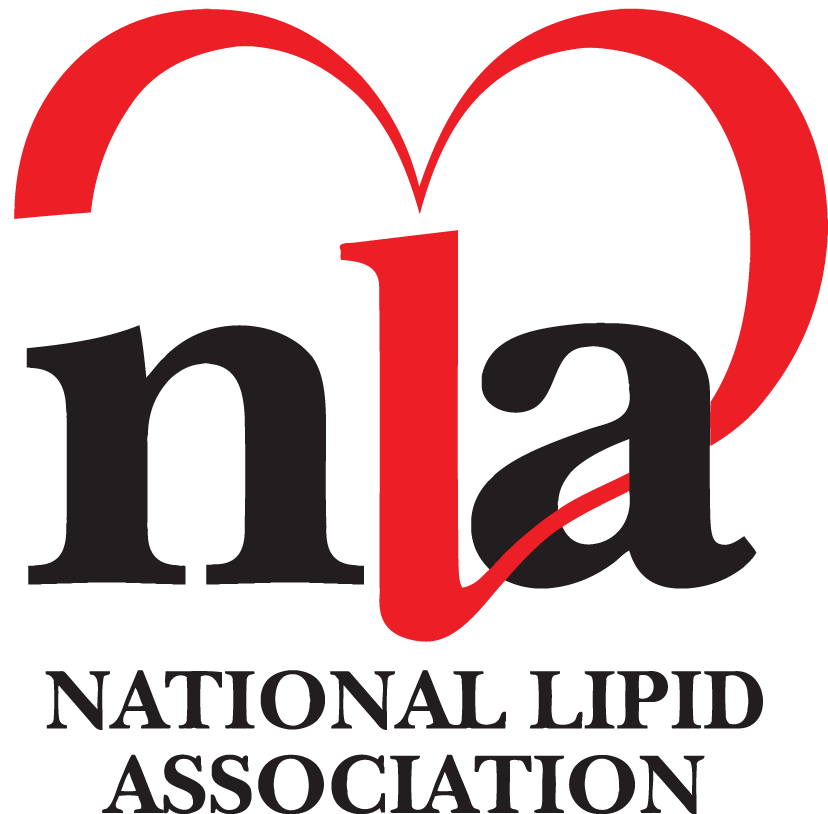It is my pleasure to interview Dr. Carol Kirkpatrick as a part of the National Lipid Association (NLA) 15th anniversary issue of the LipidSpin. How are you Dr. Kirkpatrick?
I am doing great, thank you. It is a pleasure to be part of the NLA's special anniversary.
First, I would like to begin by having you tell us about yourself. Let’s start with your childhood. Where did you grow up?
I was born in Charleston, South Carolina, but soon after, my family moved to Preston, Idaho.
Do you think your childhood impacted your professional life, particularly pursuing a career path towards medicine?
I believe so. I was overweight from when I was about 5 or 6 years old untilmy sophomore year in high school. My family was not very active and both of my parents were employed outside of the home, so meals at home were typically quick and easy foods to prepare, but not necessarily the healthiest. As a teenager, achieving a healthier weight became important to me to allow me to participate in activities in high school. So I focused on a physically active lifestyle and healthier eating. By the time I started
college, a deep knowledge of nutrition and lifestyle principles, health promotion, and disease prevention became my passion, all culminating in
medical dietetics as my major!
Now, from a registered dietitian nutritionist to a lipid superstar and a leader in the NLA in recent years—how did that happen?
Fate! I was not sure what my “calling” in the dietetic field was until I joined a cardiology practice in 2007 to help develop a cardiovascular risk management clinic (CRMC). In the process of developing the CRMC protocols, a very good friend and a colleague of mine advised me to attend my first NLA meeting in May 2007 where I attended a lipid clinic development workshop. In February 2009, I attended a scientific forum that was planned by the Pacific Lipid Association (PLA), and I realized how much I enjoyed learning about lipid disorders, disease management, and how nutrition can impact both, as well as its relationship to cardiovascular health.
How long have you been a member of the NLA?
Since I first attended the meeting in May 2007.
What are your most favorable and memorable moments with the NLA?
I believe meeting my amazing friends, colleagues and mentors of the NLA has been extremely rewarding and resulted in many great memories and opportunities afterwards, such as:
- Being invited to serve on the NLA’s expert panel—lifestyle therapies section writing committee for the NLA Recommendations for Patient-Centered Management of Dyslipidemia—Part 2 that was published in 2015. It was the continuation of the NLA’s Recommendations and my first time to serve on an expert panel for such an endeavor.
- Being honored by my NLA family as a FNLA in June 2015.
- Serving as co-chair of Clinician’s Lifestyle Modification Toolbox project in 2016 and again in 2017.
- When asked by Dr. Carl Orringer to join Harold Bays, MD, FNLA, and Ralph LaForge, MSc, FNLA, as a contributing editor for the 2016 Self-Assessment Program Module 4: Contemporary Management of Dyslipidemia: Lifestyle Therapy.
- The invitation from Dr. Harold Bays to contribute as a reviewer for the NLA Annual Summary.
Over the past 10-15 years, what moments stand out as turning points for the NLA and yourself as a member?
There are so many!
- The role the NLA has taken in publishing statements and reports to guide clinicians in day-to-day practice, such as the NLA’s Safety Task Force reports on statins and non-statins; the executive summary on the screening, diagnosis, and management of familial hypercholesterolemia; and statements addressing the results of trials, such as IMPROVE-IT.
- The publication of the NLA Recommendations for Patient-Centered Management of Dyslipidemia—Part 1 and Part 2. The Part 1 expert panel members provided guidance for risk assessment and various therapeutic modalities for clinicians. The Part 2 expert panel members focused on evidence for lifestyle therapies for dyslipidemia and addressed lipid disorder management in special populations (children, women, older adults, ethnic groups, and patients with rheumatoid arthritis, other autoimmune diseases, and HIV).
- Last year, the NLA started a great initiative: the Clinician’s Lifestyle Modification Toolbox project I just mentioned, which is a great resource for members to assist them in applying evidence-based nutrition and other lifestyle therapies that impact lipid management in their daily clinical practice.
What an amazing history! I am sure it was quite an enjoyable journey! How do you balance being involved in all these academic activities, clinical practice, and your personal life?
Well, it is always a challenge. I have two children, Ian (11 years old) and Grace (8 years old), and our dog, Zoe, so we try making the most of our family nights and weekends indulging in outdoor activities like hiking or walking Zoe (we even played “Pokémon Go” together!). I will humor Ian and Grace and go downhill skiing with them once or twice a season. However, I find mental and physical balance most through mountain biking or hiking with friends. I find that by doing the outdoor activities I enjoy, I am able to develop ideas or problem-solve tasks that positively impact my clinical and academic practice and my NLA projects.
What do you think of the NLA mentorship program? And what was your personal experience?
I think it is extremely valuable! I don’t believe I took full advantage of the mentoring program primarily because I did not realize a structured mentoring program was available. However, through attending NLA meetings, I have met many friends who I consider mentors, such as Penny Kris-Etherton, Geeta Sikand, Julie Bolick, Kathy Rhodes, Nancy Smith, Kevin Maki, Ralph LaForge, Karen Aspry, Kaye-Eileen Willard, and Harold Bays. I continue to meet people who I believe will impact my life in similar ways through attending NLA meetings, being an active member in NLA ongoing projects, and serving the PLA Board as a regional representative.
What is your next goal with the NLA for the next few years?
I want to continue to serve as a co-chair for the Clinician’s Lifestyle Modification Toolbox project and update or add to it because I believe this will allow providers to positively impact dyslipidemia management.
I have enjoyed discussing your journey with the NLA. I would like to ask the next set of questions for new members like myself. Among medical professionals, whom do you think may benefit from joining the NLA?
Any practitioner who might provide care to patients with lipid disorders and/or metabolic diseases will benefit from joining the NLA.
How feasible it is to achieve this?
Very feasible! The NLA accepts a wide array of healthcare providers with various levels of training, and all of them can join the NLA community and receive its benefits. I was a complete novice when I joined, and I have gained an immense amount of knowledge. There are plenty of resources available to increase knowledge at any level of understanding/expertise. I completed the NLA-SAPs in 2009/2010 as I was studying for the Clinical Lipid Specialist exam. It seemed very daunting to me to complete the SAPs, but receiving my SAP module score, answering critique, along with the knowledge I gained with each module was extremely rewarding.
What obstacles do you foresee in the process of acquiring new members?
Well, I was lucky to be introduced to the NLA through a friend of mine. However, prior to that, I never realized that the NLA existed. I think the biggest obstacle is becoming aware of the NLA and realizing its benefits for providers.
The NLA leaders and staff are extremely helpful, willing to teach, and always there for you. But I believe we (as part of the NLA) should be working on ways to attract more healthcare providers.
As a junior member of the NLA and a fellow in training, what tips do you have for me and others who are in the same boat?
Take advantage of the resources that the NLA offers to increase your knowledge, including:
- The SAPs, reading the Journal of Clinical Lipidology, and the LipidSpin.
- Attend the NLA meetings—they are wonderful learning and networking opportunities.
- Attend the Lipid Academy course or the Masters in Lipidology preconference workshops while at the NLA meetings.
- Become involved in the NLA by contributing to the LipidSpin as an author when your regional chapter is responsible for developing an issue.
- Serve on your chapter’s board; consider becoming a in-training member to be a regional representative.
NLA has been the home for so many great leaders. If you could meet anyone past or present and pick their brain, whom would it be?
I would love to sit in a room and have a conversation with the many leaders I have come to respect all at the same time, including but not limited to: Harold Bays, Virgil Brown, Anne Goldberg, Terry Jacobson, Penny Kris-Etherton, Carl Orringer, Joyce Ross, and James Underberg. I probably would not say anything—I would just listen and learn from what I believe would be an extraordinary conversation!
Overall, being able to work with many of the NLA leaders and becoming involved in NLA projects is by far its most wonderful aspect. The unique aspect of the NLA is that it really is a very welcoming organization that embraces its members and encourages involvement. The NLA gives back to its members through its meetings, education programs, and the development of tools and resources for practicing clinicians.
Thank you, Dr. Kirkpatrick, for joining me today in this issue of LipidSpin.
Thank you, Dr. Harhash, for taking the time to interview me, and welcome to the NLA!






.jpg)
.png)












